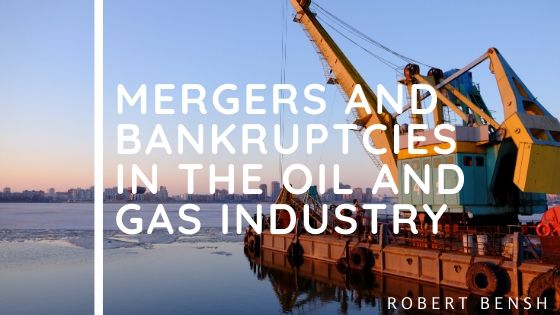Despite rapid growth of oil production in the United States the past decade, an unexpected rise in mergers and bankruptcies are in the energy sector’s forecast. New drillers that entered the hydraulic fracturing (aka fracking) market in the 2010s are now facing fierce competition from oil giants such as ExxonMobil and Chevron. Here’s a brief look at this scenario and how it affects players in the oil industry.
Rise of Frackers
The fracking industry rose during the Obama Administration as a response to high oil prices. This new policy led to U.S. oil production outpacing Saudi Arabia and Russia. It transformed the U.S. from the top global oil importer to a net exporter of oil and fuel. The technology involves extracting oil from difficult locations such as those with restricted access and depleted resources. The result has been U.S. production of nearly 13 million barrels of oil per day.
Booming markets for American drillers have been places such as West Texas and North Dakota. This boom was so pronounced it disrupted the global oil industry, leading to a pact between OPEC, Russia and other nations to controlling production to keep prices steady. The U.S., by contrast, does not issue government production controls.
Declining Performance of Energy for Investors
The success of American frackers supplying oil faster than foreign competitors attracted financing from investors. It led to an oil glut, causing global oil prices to plunge due to oversupply. Now investors are concerned about the boom-to-bust cycles that the fracking industry has generated and how to project future demand.
During the past decade energy stocks have performed poorly compared with the Dow and S&P indexes with just a 4 percent increase. Investors are worried about energy debt as well as demand growth. The oil glut has weakened U.S. drillers as oil prices have hovered below profitable levels throughout 2019.
Moving Toward a Big Shakeout
Oil industry analysts are warning that U.S. drillers are in the early stages of a shakeout that will cause some companies to collapse and others to be acquired by bigger firms. The companies that don’t have to worry about debt maturing soon will try to ride out 2020 and 2021 in hopes of higher oil prices to offset capital expenditures.
Meanwhile, ExxonMobil and Chevron are in the process of expanding their operations in the Permian Basin, which is a rich region in West Texas and Southeastern New Mexico for shale drilling. Citi analyst Eric Lee believes U.S. crude oil production will reach about 16 million barrels per day by 2023. Companies with weak capitalization, however, may face liquidation.
